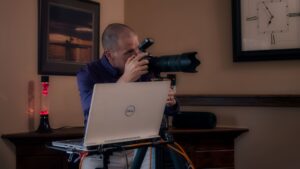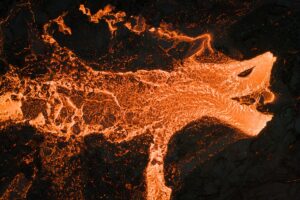
When you look at your images, it doesn’t matter what they look like compared to other photographers’ images. How do you feel when you look at your photographs? Do you feel excitement? Do you feel that this image reflects your feelings in this moment? If so, that photo is good enough.
You can also listen to this episode on iTunes, Pocket Casts, Spotify, Castbox, and Google Podcasts.
Take your passion for photography to new heights – join our community today!

Last week, we asked our community members to ask anything they wanted about photography. We received lots of amazing questions from photographers across the globe! In this episode, I answer all of their questions and cover topics such as editing, portrait photography, neutral density filters, and more.
We talk about:
- Photo editing techniques
- How to analyse your photographs to improve your skills
- How to take stunning soft-focused portraits
& much more!
This is a special episode inspired by our community. We’re confident that it will teach you something new and inspire you to take some photos today.
Here is a preview of this episode.

Q: How do I take soft-focused portraits that stand out?
There are a few important things to keep in mind when taking photos of people. You have to consider different factors, which can feel overwhelming sometimes. Fortunately, it doesn’t need to be that way!
Keep these things in mind when you take photos using a wide aperture:
- Backgrounds. Keep them as simple as possible.
- Foregrounds. Add depth to your photos by using colourful objects.
- Editing. If something is missing, you might benefit from colour correcting your images.

Q: How do you evaluate your images?
Everybody’s workflow is different, but I evaluate my images using my intuition. If it feels right, I go with it. Another similar question that was asked had to do with the completion of a photo during the editing process. How do you know when a photo is complete?
It’s easy to retouch/edit/colour correct your photos endlessly. Some photographers combat this by setting a time limit while editing. Others go by intuition, which can be unpredictable. However, in my experience, trusting my intuition (and setting the occasional time limit) has helped me produce work that I personally like.
At the end of the day, you have to be proud of your work. You have to enjoy it. If you don’t like what you produce, no matter how technically perfect it may be, you won’t enjoy taking photos.

Q: How do neutral density filters work in landscape photography?
A neutral density filter can be compared to a pair of sunglasses. Sunglasses darken what we see and protect our eyes. Similarly, ND filters darken a landscape and make it easier to take creative photographs.
This is especially helpful on bright and sunny days when you can’t get the perfect shot. If one part of your photo if overexposed and another part is perfectly lit, you might not get the best results. An ND filter can balance everything out and help you achieve harmony in your work.
ND filters are often used in long exposure photography. Let’s say you want to take photos of a beautiful waterfall. If there’s a lot of light available, you’ll end up with overexposed photos. You can compensate for all the light by using an ND filter. It will darken everything and allow you to use a slower shutter speed to get the best results.
Links
Join Our Photography Community!









